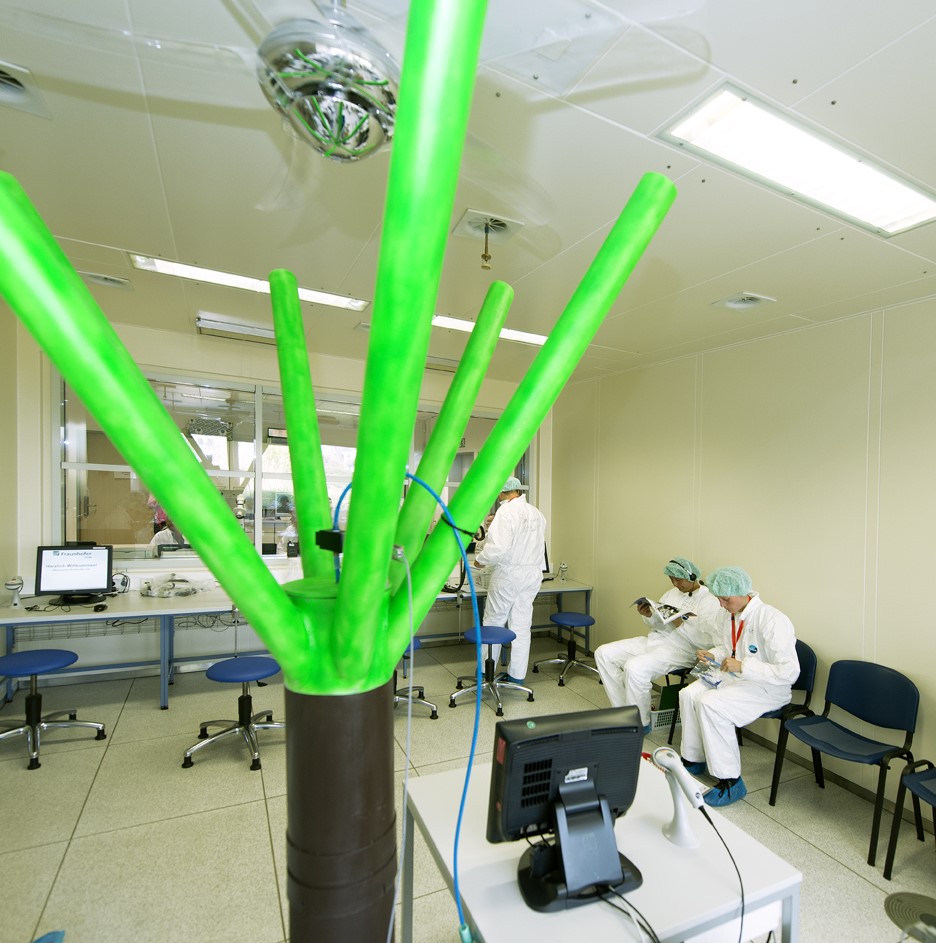
In the Allergen Challenge Chamber at Fraunhofer ITEM, a patented process is used to mix a commercially available allergen solution with a lactose solution, which is then spray-dried. Allergen-lactose particles of a set size are then spread throughout the allergen chamber. In the past, this process has been used to carry out clinical trials with house dust particles. However, a lactose solution with the required level of concentration is not commercially available — it must be specially produced for the clinical trials. Numerous regulatory provisions must be fulfilled in order to carry out this manufacturing task, and quality assurance steps must be completed. This results in a very time-consuming, expensive process.
The aim of this method development study was to examine whether the lactose solution could be replaced with sodium chloride solution (NaCl), as it is easy to obtain this solution commercially. In a controlled study, patients with a dust mite allergy and allergic rhinitis were exposed five times to five different atmospheres in the Allergen Challenge Chamber, for four hours each time. One atmosphere was clean air; one had lactose particles; one had only NaCl particles; one had lactose house dust particles; and one had NaCl house dust particles.
The results showed there was no difference between the performance of lactose and NaCl particles as allergen carriers. This means that the researchers have made significant advancements in their allergen challenge model using allergen solutions. In the future, it will be possible to carry out these allergen chamber studies more quickly and for a lower cost.
 Fraunhofer Institute for Toxicology and Experimental Medicine
Fraunhofer Institute for Toxicology and Experimental Medicine